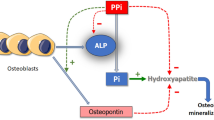Abstract
In this study, a number of selected trace elements and clinically relevant parameters were compared between thoracic empyemata and the corresponding sera for a better understanding of the trace element distribution between these two compartments. Serum-empyema pairs were obtained from 13 patients and quantified for selected and essential trace elements, namely copper (Cu), zinc (Zn), manganese (Mn), rubidium (Rb), and magnesium (Mg), by inductively coupled plasma-mass spectrometry (ICP-MS). In addition, the concentrations of the following clinical laboratory parameters were analyzed by standard methods: total protein, leukocyte count, lactate dehydrogenase, glucose, pH, and the C-reactive protein.
Individual concentrations of the elements determined in the empyemata were frequently higher than in pleural effusions of any other benign or malignant condition except for Cu. Serum Cu exceeded the normal range (600–1400 µg/kg) in 6 out of 13 patients (median 1410 µg/kg). In the empyemata, Zn concentrations (median 2000 µg/kg) were characteristically higher than in the sera (median 450 µg/kg) and exceeded the upper limit for serum (1200 µg/kg) in 8 of the 13 patients. Manganese concentrations in the empyemata (median 2.7 µg/kg) were also higher compared to corresponding sera, although they stayed within the limits considered normal for serum of healthy adults (upper limit 2.9 µg/kg). Rubidium was also moderately higher in most empyemata (median 290 µg/kg) and exceeded the upper limit for serum (560 µg/kg) in two patients. The median concentration of the essential element magnesium was higher in the empyemata (23 mg/kg) than in the sera (21 mg/kg). However, all serum Mg concentrations except three remained within the normal range (17–22 mg/kg).
Removal of large amounts of empyematous fluid may deprive the body of trace elements and can cause suboptimal or deficient trace element status and homeostasis. Recuperation will be accelerated by compensatory supplementation of trace elements. Therefore, selective medication with adequate trace element compounds in patients with thoracic empyema can be generally recommended for zinc. The other elements need not necessarily be monitored or substituted, because of their stable concentrations in the serum. Rb may have a biological impact, but deficiency symptoms in man are not clearly defined.
Similar content being viewed by others
References
C. Mehu, Etude sur les liquides epanches dans la plevre, Arch. Gen. Med. 2, 56–62 (1872).
N. A. Vianna, Non-tuberculous bacterial empyema in patients with and without underlying diseases, JAMA 215, 69–75 (1971).
H. Hamm and R. W. Light, Parapneumonic effusions and empyema, Eur. Respir. J. 10, 1150–1156 (1977).
S. A. Sahn, L. B. Reller, D. A. Taryle, V. B. Antony, and J. T. Good, Jr., The contribution of leukocytes and bacteria to the low pH of empyema fluid, Am. Rev. Respir. Dis. 128, 811–815 (1983).
R. W. Light, Management of parapneumonic effusions, Arch. Intern. Med. 141, 1339–1341 (1981).
M. E. Balkan and H. Ozgunes, Serum protein and zinc levels in patients with thoracic empyema, Biol. Trace Element Res. 54, 105–112 (1996).
W. Domej, M. Krachler, C. Schlagenhaufen, M. Trinker, G. J. Krejs, and K. J. Irgolic, Trace elements in pleural effusions, J. Trace Element Med. Biol. 11, 232–238 (1997).
M. Krachler, W. Domej, and Irgolic, K. J. Concentrations of trace elements in osteoarthritic knee-joint effusions, Biol. Trace Element Res., 75, 253–264 (2000).
G. P. La Mense, C. Strange, and S. A. Sahn, Empyema thoracic. Therapeutic management and outcome, Clin. Invest. 107, 1532–1537 (1995).
R. W. Light, Pleural Diseases, 3rd ed., Williams & Wilkins, Baltimore, MA, pp. 129–132 (1995).
Boehringer Mannheim, TP Gesamt Eiweiß (August 1993).
Boehringer Mannheim, CRP Tina-quant (June 1996).
Boehringer Mannheim, LDH optimiert (July 1996).
R. W. Light, M. I. Mac Gregor, and P. C. Luchsinger, Pleural effusion: the diagnostic separation of transudates and exudates, Ann. Intern. Med. 77, 507–513 (1992).
S. Caroli, A. Alimonti, E. Coni, F. Petrucci, O. Senofonte, and N. Violante, The assessment of reference values for elements in human biological tissues and fluids: a systematic review, Crit. Rev. Anal. Chem. 24, 363–398 (1994).
F. Rodriguez-Panadero and J. Lopez Mejias, Low glucose and pH levels in malignant pleural effusions, Am. Rev. Respir. Dis. 139, 663–667 (1989).
A. Peretz, J. Noe, O. Jeghers, N. Leclercq, J. P. Praet, F. Vertogen, et al., Interest of zinc determination in leukocyte fractions for the assessment of marginal zinc status, Clin. Chim. Acta 203, 35–46 (1991).
M. Krachler, H. Scharfetter, and G. H. Wirnsberger, Exchange of alkali trace elements in hemodialysis patients: a comparison with Na and K, Nephron 83, 226–236 (1999).
W. Mertz, The essential trace elements, Science 213, 1332 (1981).
H. A. Schroeder, The Trace Elements in Man, The Devin-Adair Co., Old Greenwich, CT, p. 26 (1973).
D. C. Heimburger and R. L. Weinsier, Handbook of Clinical Nutrition, 3rd ed. Mosby, St. Louis, MO, pp. 42–52 (1997).
Author information
Authors and Affiliations
Additional information
Deceased.
Rights and permissions
About this article
Cite this article
Domej, W., Krachler, M., Goessler, W. et al. Concentrations of copper, zinc, manganese, rubidium, and magnesium in thoracic empyemata and corresponding sera. Biol Trace Elem Res 78, 53–66 (2000). https://doi.org/10.1385/BTER:78:1-3:53
Received:
Revised:
Accepted:
Issue Date:
DOI: https://doi.org/10.1385/BTER:78:1-3:53




